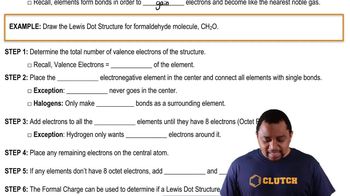Here are the essential concepts you must grasp in order to answer the question correctly.
Stoichiometry
Stoichiometry is the branch of chemistry that deals with the quantitative relationships between the reactants and products in a chemical reaction. It allows us to calculate the amounts of substances consumed and produced in a reaction based on balanced chemical equations. Understanding stoichiometry is essential for determining how many moles of each substance are present after a reaction, as it provides the ratios needed to relate the quantities of reactants and products.
Recommended video:
Molarity
Molarity is a measure of concentration defined as the number of moles of solute per liter of solution. It is expressed in units of moles per liter (M). In this question, the molarity of HNO3 is given as 0.200 M, which indicates how many moles of HNO3 are present in the 25.0 mL solution. Calculating the moles of HNO3 is crucial for determining how much of the reactant is available to react with Mg(OH)2.
Recommended video:
Neutralization Reaction
A neutralization reaction occurs when an acid reacts with a base to produce water and a salt. In this case, Mg(OH)2, a base, reacts with HNO3, an acid, to form Mg(NO3)2 and water. Understanding the products of this reaction is important for calculating the final amounts of each substance after the reaction is complete, as it helps identify the stoichiometric relationships and the limiting reactant.
Recommended video:
Lewis Dot Structures: Neutral Compounds
 Verified step by step guidance
Verified step by step guidance


